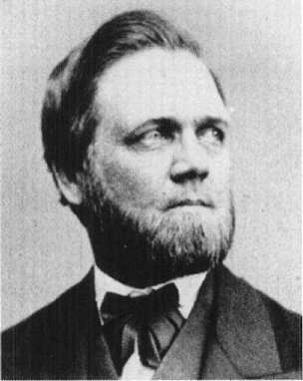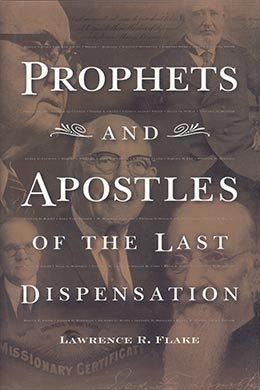Franklin Dewey Richards
Lawrence R. Flake, Prophets and Apostles of the Last Dispensation (Provo, UT: Religious Studies Center, Brigham Young University, 2001), 333–35.

Born: 2 April 1821, Richmond, Massachusetts
Quorum of the Twelve Apostles: 12 February 1849 (age 27)
President of the Quorum of the Twelve: 13 September 1898
Died: 9 December 1899 (age 78)
In 1838 seventeen-year-old Franklin Dewey Richards left his home in Richmond, Massachusetts, to join his fifteen-year-old brother, George, who had been baptized a Mormon a few months before and had gone to Missouri. Their father’s family, along with two uncles, Levi and Willard Richards, had been converted in 1835 by two Mormon cousins, Brigham and Joseph Young. Franklin, who joined somewhat later than his brother, was anxious to see George and share his joy with him. When he reached Missouri, he learned of the Mormon war and, upon reaching Hauns Mill, discovered that the body of his younger brother lay at the bottom of a well that served as a grave for nearly a score of innocent victims of a vicious mob attack. During the years ahead, Franklin lost another brother, Joseph, to the rigors of the Mormon Battalion trek and two of his own children to the privations suffered during the exodus from Nauvoo to Winter Quarters.
Undaunted by these losses and spurred by a testimony of the divinity of Mormonism, Franklin Richards became one of the most productive of the Lord’s servants. On a mission to Indiana he met Jane Snyder, who became his wife on 18 December 1842. [1] Ten of the first fourteen years of their marriage were spent apart, as Elder Richards filled four missions to Great Britain, three times as president. During this time he arranged passage for more than thirty thousand Saints going to Zion. Many of these traveled under the auspices of the Perpetual Emigration Fund, which he helped establish. Under his direction the mode of emigration was changed from sailing to steamships and the route of travel was changed from the unhealthy New Orleans-St. Louis course to the New York harbor. The Millennial Star became a weekly publication and the law of tithing was introduced among the British Saints.
Elder Richards, then an apostle, felt the importance of acquainting the members in Britain, who at the time outnumbered those in the United States, with some of the great revelations given to Joseph Smith. In 1851 he published a pamphlet called the “Pearl of Great Price.” It contained the books of Moses and Abraham; writings of Joseph Smith; a poem, now called “Oh Say, What Is Truth?”; and excerpts from some of the great revelations of the Doctrine and Covenants. Almost thirty years later the Pearl of Great Price became one of the standard works of the Church.
Back home in Utah, Elder Richards presided over the Church in Ogden, where he became a judge, state legislator, brigadier general in the Nauvoo Legion, and founder and editor of a newspaper, the Ogden Junction. As an apostle, he also served as Church Historian and president of the state genealogical and historical societies, and during the fifteen months prior to his death in 1899, he became president of the Quorum of the Twelve. An associate in that quorum, Matthias F. Cowley, wrote, “Franklin Dewey Richards will serve as a beacon light to all generations who. . . will bless his memory praise God, who sent him to perform his part in the great dispensation of the fulness of times.” [2]
Notes
[1] Franklin L. West, Life of Franklin D. Richards: President of the Quorum of the Twelve Apostles of the Church of Jesus Christ of Latter-day Saints (Salt Lake City: Deseret News Press, 1924), 49–50.
[2] Matthias F. Cowley, Prophets and Patriarchs of the Church of Jesus Christ of Latter-day Saints (Chattanooga, TN: Ben E. Rich, 1902), 237.
